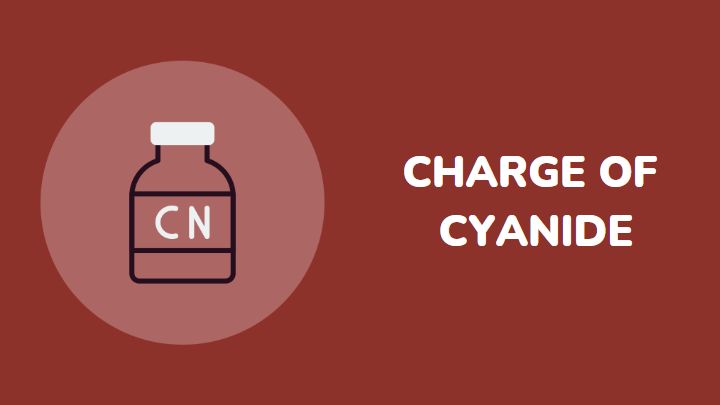Cyanide is a combination of two nonmetals, carbon and nitrogen. Each element has a positive charge but surprisingly, the overall compound is negatively charged. In ionic reactions, cyanide is represented by CN-, which means it has a -1 charge.
Let’s find out why cyanide has a negative charge. Also, you’ll get to know if CN exhibits other charges.
What is the charge of CN?
The charge of CN is -1. The negative charge is contrary to the positive charges on carbon and nitrogen.
The negative charge results from the bond formed with the four electrons from carbon and five electrons from nitrogen. The nine electrons result in three bonds from six electrons and a lone pair of electrons that leaves carbon with a negative charge.
Is CN a ligand?
Yes, it is. Cyanide is an ambidentate ligand because it can donate electron pairs from both carbon and nitrogen.
In some fields, it is referred to as a strong field ligand for Hermes and hemoproteins.
Can cyanide ions have a positive charge?
No, it cannot. Cyanide is an anion and cannot have a positive charge.
FAQs
How reactive is cyanide?
Cyanide is a reactive ionic compound because of its negative charge and triple bond.
Carbon would rather have four electrons in its outermost shell. That is, it would readily lose the extra electron in its bond with nitrogen. Therefore, it easily binds with other atoms or attains this stability.
Can cyanide have a double bond?
Yes, it can. A carbon-nitrogen compound with a double bond is not as strong as a triple-bond carbon-nitrogen compound. These bonds are called imines or Schiff bases.
Is CN on the periodic table?
No, it is not. The periodic table consists of only elements. Cyanide is an ionic molecule, not an element. Therefore, it is not on the periodic table.
Conclusion
The -1 charge of cyanide results from the excess electrons from the carbon and nitrogen bonds. These bonds are formed with their 4 and 5 valence electrons, respectively.
Generally, when an atom loses one electron to complete its octet structure, it gets a negative charge. In the C-N bond in cyanide, both atoms share 6 electrons to form a triple bond. This leaves carbon with a negative charge and a lone pair of electrons.
You can also learn about the charge of carbon despite its tetravalency.
Thanks for reading.
